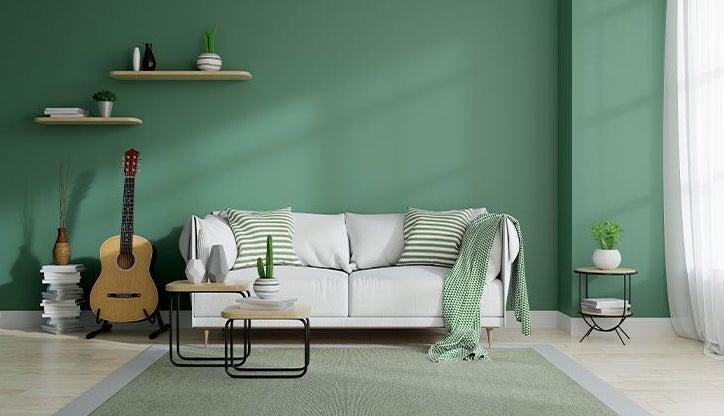The minimalist design is an influential visual style with an established history in the fields of architecture, interiors, art, graphics, fashion and virtually all other aspects of the design.

Minimalism has become a modern lifestyle buzzword, with its own media gurus promising that tidying up our homes and simplifying our lives will help us cope with an overwhelming world.
What is minimalism?
Minimalist design is about prioritizing the essentials . A minimalist building, object or interior design is stripped of its main function, made using limited materials, neutral colors, simple shapes and avoiding excess ornamentation to achieve a pure form of elegance.
While the ultimate expression of a minimalist design may seem simple and effortless, as understated as a poem and as clear as a bell, achieving this kind of powerful simplicity is far from easy.
Minimalist design has continued to grow in popularity over the last century, but for every fan there is a maximalist critic who dismisses it as boring or sterile, lacking in imagination and heart.
While minimalist architecture and product design can sometimes be profitable, environmentally friendly, and ultimately contribute to the democratization and accessibility of good design, it has also become synonymous with a rarefied pursuit of the perfect object, a luxury. that only the privileged few can afford it and that can lead to its own form of perpetual excess.
How the minimalist style arose in decoration?
Minimalist design emerged in the 20th century as a reaction and rejection of the highly decorative styles of the past, from ruffled Victorian architecture to abstract expressionist art.
Some design historians trace the origins of minimalism to the simplified forms personified by the Dutch De Stijl movement of 1917 to the early 1930s and it is widely recognized that it has been influenced by the Zen simplicity of traditional Japanese gardens and interiors and the clean aesthetic of Scandinavian designs.
The “less is more” mantra of minimalist design is a quote from the legendary German architect Mies Van Der Rohe, who in post-war Europe and the USA.
He was one of the notable architects associated with the Bauhaus and Modernism who responded to the availability of new materials such as glass, steel and concrete combined with the construction processes brought about by mass production to create minimalist structures that often appear so fresh. and current as decades ago.
Minimalist design shares DNA with modern architecture, Bauhaus architecture, Brutalist architecture, and mid-century modern design.
Minimalist graphic design, art, theater, and fashion came to fruition in the 1960s. In the realm of product design, legendary figures such as German industrial designer Dieter Rams, whose mantra “less but better” guided the design of everyday objects like desk radios, calculators and lacquers, ushered in a whole new world of design. of minimalist products. in the mid-20th century that laid the groundwork for the kind of streamlined objects we live with today and continue to design for tomorrow, from the iPhone to the driverless car.
Today, minimalist interior design and home décor – minimalist bedrooms, minimalist kitchens, minimalist living rooms, minimalist nurseries, and more – offer an alternative to the accessory-packed interiors that first became popular in the world. It was Victorian and grew in popularity thanks to the consumer culture of the 20th century.
Key features of the minimalist design
- Less is more.
- Focus on functionality.
- Clean and simple lines.
- Sculptural forms.
- Lack of superfluous ornamentation and decoration.
- Monochromatic and limited color palette, with colors sometimes used as accents to create a relaxing atmosphere.
- Use of limited and well-chosen materials, such as concrete, steel, glass and wood.
- Everything has a place and a purpose.
- Use of space and natural light.
- Focus on crafts.
- Interior design that is airy and uncluttered, often with open play layouts and perfect built-in storage.
Famous Quotes About Minimalist Design
“Less is more” –Mies Van Der Rohe, architect
“Minimalism is not an architecture of self-denial, deprivation or absence: it is not defined by what is not there, but by the rectitude of what is and by the richness with which it is experienced.” –John Pawson, architect
“In pure architecture, the smallest detail must have a meaning or have a purpose.” –Augustus WN Pugin, architect
“As we live and as we are, simplicity, with a capital“ S ”, is difficult to understand today. We are no longer truly simple. We no longer live-in simple terms or places. Life is a more complex struggle now. Now it is brave to be simple: something brave even to want to be simple. It is something spiritual to understand what simplicity means ”. –Frank Lloyd Wright, architect
“I think architecture is a pragmatic art. To become art, it must be built on a basis of necessity ”. –IM Pei, architect
“Interesting clarity is the most difficult and precious thing to achieve.” –Mies Van Der Rohe, architect








